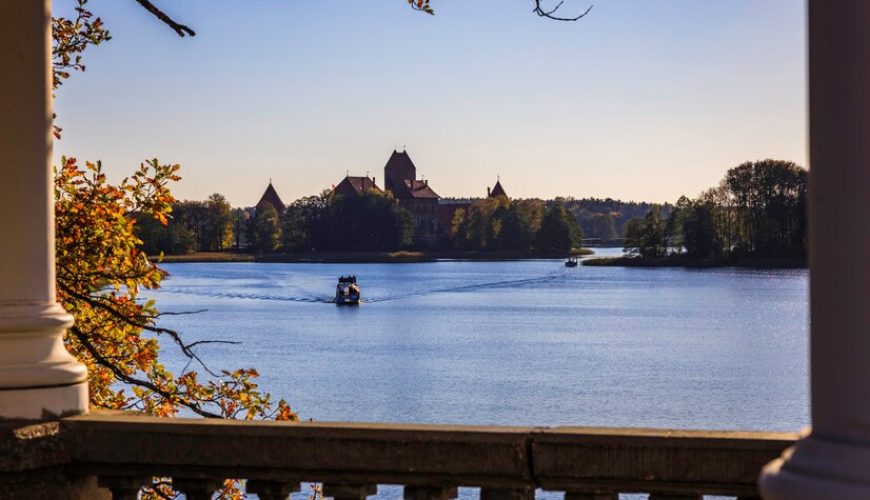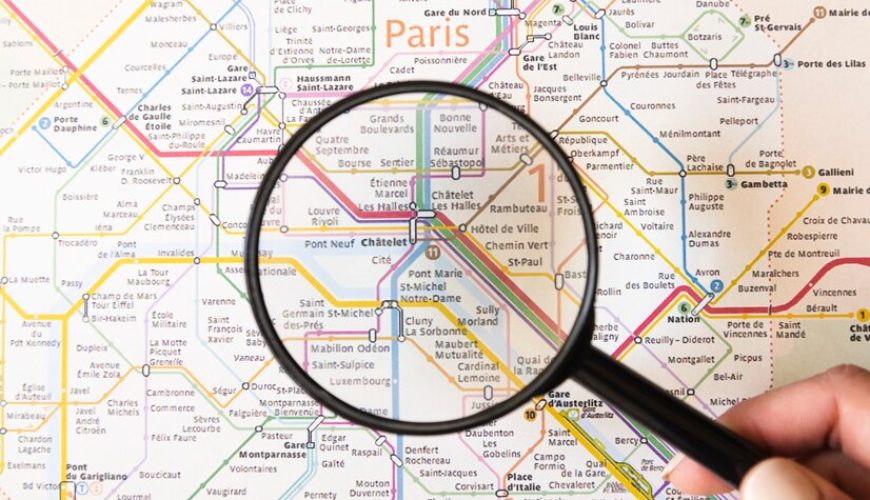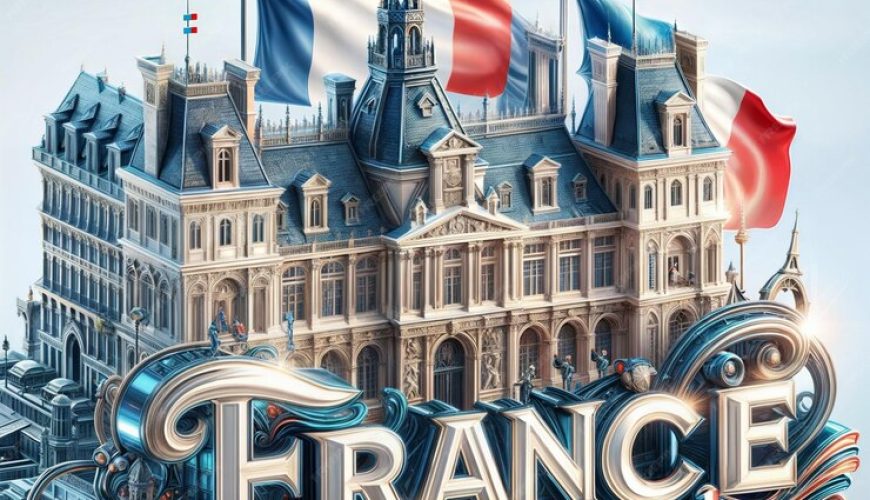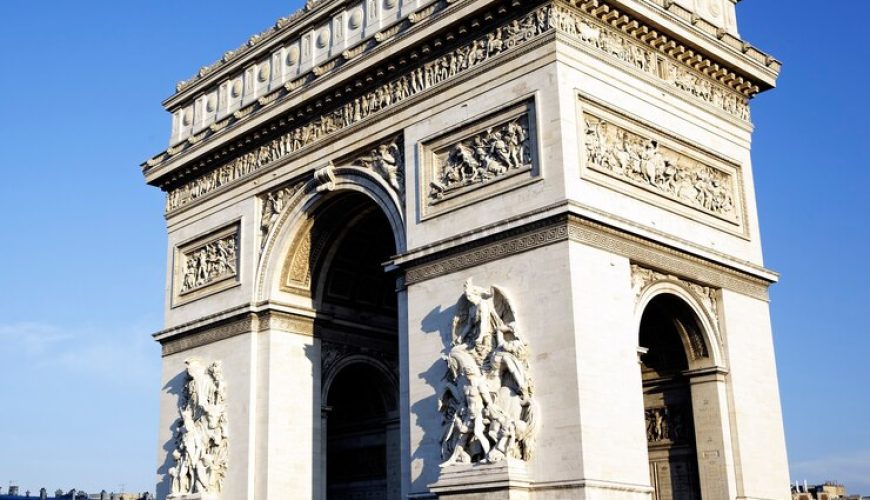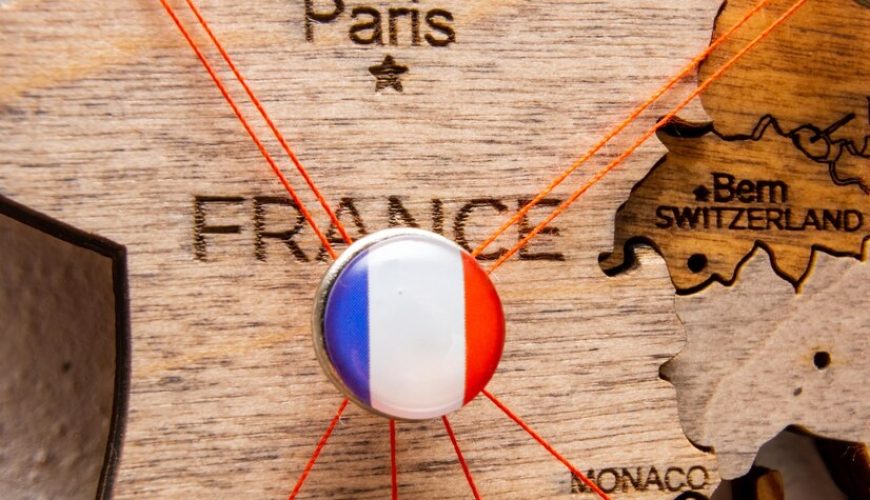You Can Visit a Lavender Paradise
The Provence region of southeastern France is world-renowned for its lavender fields, which bloom into a stunning sea of purple from late June to early August. This annual spectacle is one of the most iconic and enchanting sights in France. As you drive through the countryside, you’ll encounter endless rows of lavender stretching across rolling hills, creating a picturesque landscape that seems almost otherworldly. The vibrant purple fields, set against the backdrop of the Alps and sun-kissed villages, offer the perfect setting for photography, peaceful strolls, or simply soaking in the beauty of nature. During lavender season, the fields not only provide a stunning visual feast but also fill the air with their sweet, soothing fragrance. The scent of lavender, combined with the warm summer air, makes walking through the fields a truly sensory experience. It’s no wonder that Provence is considered a paradise for romantics and nature lovers alike. The region is dotted with charming villages like Sault, Valensole, and Gordes, where you can explore the fields, take guided tours, or even visit lavender distilleries to learn how lavender essential oils and other products are made. The small towns also host lavender festivals throughout the summer, offering a chance to enjoy local food, crafts, and, of course, the celebrated flower. For the best views and most vibrant fields, Plateau de Valensole is particularly famous for its expansive lavender fields that create a breathtaking contrast with the golden wheat fields surrounding them. The Lavender Route (Route de la Lavande) also takes visitors on a scenic journey through the region, passing the most photogenic fields and providing insight into the historical significance of lavender cultivation in Provence. Whether you’re visiting for the picturesque landscapes, the fragrance that lingers in the air, or the relaxing atmosphere, a trip to Provence during lavender season offers a truly magical experience.
Explore France Beyond Paris: Top Cities to Visit
While Paris often steals the spotlight, France is home to many other cities that offer rich culture, history, and unique experiences. Here are some top cities worth exploring: 1. Lyon Known as the culinary capital, Lyon is famous for its traditional Bouchon restaurants, its UNESCO-listed Old Town, and vibrant arts scene. Explore the city’s silk-weaving history and enjoy the local cuisine. 2. Marseilles With its Mediterranean charm, Marseilles offers a bustling port, stunning coastal views, and a rich cultural mix. Visit the Basilique Notre-Dame de la Garde for panoramic views and savor fresh seafood by the harbor. 3. Nice On the French Riviera, Nice boasts beautiful beaches, the Promenade des Anglais, and fantastic museums like the Matisse Museum. The Old Town offers colorful streets, and the laid-back atmosphere is perfect for relaxation. 4. Strasbourg Straddling the Franco-German border, Strasbourg’s timber-framed houses and stunning Strasbourg Cathedral reflect its unique blend of French and German culture. The city is famous for its Christmas markets and charming Petite France district. 5. Toulouse Known as the “Pink City”, Toulouse is famed for its red-brick buildings, vibrant atmosphere, and excellent food. Don’t miss the Basilica of Saint-Sernin and Cité de l’Espace, dedicated to aerospace. 6. Bordeaux A paradise for wine lovers, Bordeaux offers scenic vineyards, stunning neoclassical architecture, and the Place de la Bourse overlooking the Garonne River. It’s also known for contemporary culture and modern art museums. 7. Lille Lille blends French and Flemish influences, with its Grand Place, cobbled streets, and vibrant Old Town. The city is known for its markets and art museums, as well as the annual Braderie de Lille flea market. 8. Avignon Steeped in history, Avignon is home to the Palace of the Popes and the famous Pont Saint-Bénézet. The city comes alive during the Festival d’Avignon, one of the most important theatre festivals in the world. 9. Montpellier A youthful city in Occitanie, Montpellier offers a mix of medieval and modern architecture, along with vibrant street life and beautiful beaches nearby. Explore the Musée Fabre and enjoy the sunny Mediterranean climate. Conclusion Beyond Paris, these cities offer an array of experiences, from gastronomy in Lyon to the Mediterranean allure of Marseille. Whether you’re looking for historic landmarks, art museums, or beach resorts, each city provides its own distinctive flavor of French culture.
Top French Cuisine to Try
When visiting France, you’ll quickly discover that the country is a paradise for food lovers. Renowned for its rich culinary heritage, French cuisine varies by region but is always marked by exceptional flavors and meticulous techniques. Sampling some of the country’s iconic dishes should be a priority during your trip, as these meals offer a delicious window into the culture and history of France. Here are some must-try French dishes and culinary experiences: 1. Croissants and Pain au Chocolat Start your day the French way with a croissant or pain au chocolat for breakfast. These flaky, buttery pastries are a staple of French bakeries, often enjoyed with a café au lait or espresso. Croissants are light and crisp on the outside, soft and airy on the inside, while pain au chocolat is filled with a rich, gooey piece of dark chocolate, making it a perfect sweet morning treat. Be sure to stop by a local bakery, or boulangerie, to sample these fresh, melt-in-your-mouth delights. 2. French Onion Soup One of Paris’ most beloved dishes is French onion soup (soupe à l’oignon). This comforting classic consists of caramelized onions simmered in a rich broth, typically topped with a slice of toasted baguette and melted cheese, then baked until golden and bubbly. The combination of sweet onions, savory broth, and melted cheese creates a warm, satisfying dish that’s perfect for colder days. 3. Coq au Vin A quintessential French dish, coq au vin is a hearty stew made with chicken, red wine, mushrooms, onions, and herbs. This dish, originally from Burgundy, is slow-cooked to allow the flavors to meld together, creating a rich, flavorful sauce. Traditionally, coq au vin is made with a rooster, but today, most recipes use chicken. It’s a comforting and filling dish that pairs beautifully with a glass of Burgundy wine. 4. Boeuf Bourguignon Another classic from the Burgundy region, boeuf bourguignon is a beef stew slow-cooked in red wine, along with vegetables like carrots, onions, and garlic, and often flavored with herbs and bacon. The long simmering process ensures the beef becomes incredibly tender and absorbs all the complex flavors of the wine and aromatics. This rich dish is often served with boiled potatoes or crusty bread, making it a perfect winter meal. 5. Bouillabaisse If you’re visiting the Provence region or the French Riviera, don’t miss a bowl of bouillabaisse. This hearty, flavorful fish soup is typically made with a variety of fresh fish, shellfish, and aromatic herbs. The key to a traditional bouillabaisse is the use of saffron, which infuses the broth with a golden color and delicate flavor. Often served with toasted bread and a garlic mayonnaise sauce called rouille, it’s a fantastic representation of the Mediterranean’s bounty. 6. Ratatouille For a taste of the Mediterranean, ratatouille is a must-try dish, especially if you’re exploring the southern regions of France. This vegetable stew is made from a combination of eggplant, zucchini, tomatoes, bell peppers, and onions, all seasoned with fragrant herbs like thyme and basil. It’s typically simmered slowly to bring out the natural sweetness of the vegetables. Ratatouille is often served as a side dish or with a serving of rice or polenta, but it can also be a satisfying main course. 7. Escargots de Bourgogne (Snails) Escargots de Bourgogne are a famous French delicacy, particularly in the Burgundy region. While it might sound daunting to some, these garlic butter snails are a popular appetizer in France. The snails are typically cooked in a garlic butter sauce made with parsley, butter, and sometimes a bit of white wine, creating a rich, flavorful dish. If you’re open to trying new things, escargots are an essential part of French culinary tradition. 8. Macarons Macarons are one of the most iconic French desserts, made from almond flour, egg whites, and sugar, with a variety of fillings such as chocolate, vanilla, pistachio, or fruit jams. These delicate, colorful cookies have a crispy shell with a soft, chewy interior and are often found in pastry shops throughout Paris and other major cities. Their lightness and flavor make them a popular treat for those with a sweet tooth. Don’t forget to visit a well-known pâtisserie like Ladurée or Pierre Hermé for some of the best macarons in the world. 9. Tarte Tatin Tarte tatin is a classic French dessert that dates back to the late 19th century. It’s an upside-down caramelized apple tart, where the apples are cooked in butter and sugar before the pastry is placed on top and baked. Once done, the tart is flipped over, revealing a beautifully golden caramelized top. The tart is often served warm with a dollop of whipped cream or a scoop of vanilla ice cream, making it a comforting and indulgent way to end any meal. 10. Cheese and Baguette No trip to France is complete without indulging in some of the country’s world-renowned cheese. From the creamy Brie to the pungent Roquefort, and the tangy Comté, French cheese comes in a variety of textures and flavors, offering something for everyone. Often enjoyed with a baguette, cheese is an essential part of the French dining experience, whether as a starter or as part of a cheese course at the end of a meal. For a truly authentic experience, pair your cheese with some local wine for a perfect French treat. 11. Crêpes A beloved dish throughout France, crêpes are thin pancakes that can be filled with a variety of sweet or savory ingredients. The classic crêpes suzette is a sweet version served with an orange-flavored sauce, but savory crêpes, like those filled with ham, cheese, and egg (known as a galette), are also very popular. Crêpes can be found in restaurants, street food stalls, and crêperies, making them an easy and delicious meal option. Conclusion French cuisine is a feast for the senses, offering an array of flavors that reflect the country’s diverse geography and rich cultural history. Whether you’re indulging in a buttery croissant for breakfast, savoring a rich
Essential Travel Tips for First-Time Visitors to France
When visiting France for the first time, there are several cultural nuances and practical tips that can help you navigate the country smoothly, making your trip more enjoyable and ensuring that you respect local customs. From greetings to dining etiquette and wardrobe choices, here’s what you need to know before you embark on your French adventure. 1. Learn Basic French PhrasesWhile many people in France, particularly in tourist areas, speak English, learning a few basic French phrases can significantly enhance your experience and help you connect with locals. Simple greetings like “Bonjour” (Good day/Hello) and “Bonsoir” (Good evening) are appreciated, especially when entering shops, cafes, or restaurants. When thanking someone, “Merci” (Thank you) is always a polite choice, and if you need something, saying “S’il vous plaît” (Please) can go a long way. Even if you’re not fluent in French, showing that you’re making an effort to speak the language is seen as a sign of respect and will often make interactions warmer and more positive. In general, always greet people before launching into requests; a simple “Bonjour” or “Bonsoir” will go a long way in making a good impression. 2. Respecting French Dining EtiquetteDining is an important cultural experience in France, and there are certain etiquette rules that should be followed to avoid unintentionally offending anyone. Tipping is not mandatory in France, as service charges are usually included in the bill, but leaving a small tip of around 5-10% in more casual settings, or rounding up the bill in cafes, is common and appreciated. Formal table manners are observed, so try to keep your elbows off the table and always use both hands while eating. When it comes to drinks, remember that wine is often enjoyed throughout meals in France. However, if you’re invited to a dinner party, it’s considered polite to bring a small gift for your hosts, like a bottle of wine or a box of chocolates. 3. Mind the Dress CodeWhile France is known for its fashion-forward culture, dressing appropriately for the occasion can also make a difference in how you’re perceived. In cities like Paris, Lyon, and Nice, Parisians especially tend to dress in a stylish but understated manner. If you’re visiting more upscale areas, such as Michelin-starred restaurants, theaters, or art galleries, it’s a good idea to dress smart-casual. When in doubt, it’s always better to slightly overdress than underdress. In contrast, if you’re heading to beach towns or the French Riviera, more casual, summer-appropriate clothing is acceptable, but make sure it’s still neat and respectful. Additionally, make sure to pack comfortable shoes as you’ll be walking a lot, particularly when exploring historic cities, gardens, and museums. 4. The Importance of PolitenessFrance places a high value on politeness, and small gestures of courtesy go a long way. If you are entering any shop, café, or establishment, always greet the staff with a “Bonjour” (Hello) or “Bonsoir” (Good evening). Even if you don’t speak much French, making this simple gesture will show respect. When leaving a shop or restaurant, saying “Au revoir” (Goodbye) is a polite way to part. In Paris, personal space is highly valued, so be mindful of how closely you stand to others, especially in crowded places like metros and cafes. 5. Be Aware of Store Hours and BreaksIn France, store hours can be different from what you might be used to, particularly in smaller towns or rural areas. Many businesses, including shops, supermarkets, and even some restaurants, close in the afternoon for a siesta-style break, often between 12:30 PM and 2:30 PM. While big cities like Paris and Marseille tend to have longer hours, smaller towns may operate with more limited schedules. It’s always best to plan your shopping or meal times accordingly. Also, note that many shops are closed on Sundays, although this is more common in smaller towns than in large cities. 6. Tipping EtiquetteAs mentioned, tipping is not required in France because a service charge (typically around 15%) is included in most restaurant bills. However, leaving a tip is still appreciated, especially if you’ve received exceptional service. In cafes, it’s common to round up your bill to the nearest euro. For taxi rides, rounding up the fare is typical. In more casual places like cafes, you don’t need to tip excessively, but in fine dining or higher-end restaurants, tipping about 5-10% is more customary if the service was exceptional. 7. Public Transportation EtiquettePublic transportation is the most common way to get around France, especially in Paris, where the Métro is the easiest and most efficient method of travel. Be aware of line etiquette; Parisians are generally quite orderly, so make sure to stand in line and wait your turn to board trains, buses, and trams. Metro tickets should be validated before entering the platforms. Also, avoid talking loudly or making phone calls on public transport, as it’s considered impolite in France. When on the Métro, keep your bags close to you and be cautious of pickpockets, especially in crowded areas. 8. Health and SafetyWhile France is generally a very safe country, it’s always wise to take precautions, particularly in busy tourist areas like the Champs-Élysées or Montmartre. Be aware of your surroundings, and keep your valuables secure. In Paris, pickpocketing can be a concern, so make sure your wallet, phone, and passport are safely tucked away. Also, always make sure you have travel insurance that covers health emergencies. The healthcare system in France is excellent, but it’s always better to be prepared. 9. Understanding the French Attitude to TimeIn France, there’s often a more relaxed attitude to time compared to some other cultures, particularly when it comes to dining or socializing. Restaurants tend to have longer meal times, especially dinner, and it’s not unusual for meals to stretch out for hours. Late dinners are also the norm, particularly in the southern regions of France, where dining might not start until 8:00 PM or even later. When meeting with locals, don’t expect a hurried pace, as it’s important
How to Get Around France (Transportation Tips)
France is a country with an excellent and well-connected transportation system, making it incredibly easy for travelers to explore the diverse landscapes, charming towns, and vibrant cities. Whether you’re planning to visit the iconic landmarks of Paris or take in the beauty of the French countryside, there are plenty of convenient options to get around the country. 1. High-Speed Trains (TGV)One of the most efficient and comfortable ways to travel between cities in France is by taking the TGV (Train à Grande Vitesse), the country’s famous high-speed train network. The TGV connects major cities such as Paris, Lyon, Marseille, Nice, and Bordeaux, allowing you to travel quickly and comfortably, often in just a few hours. The TGV reaches speeds of up to 320 km/h (200 mph), making it one of the fastest ways to cover long distances. For example, you can travel from Paris to Lyon in about two hours or from Paris to Marseille in just three hours. TGV Lyria even offers routes between Paris and Switzerland, making it an excellent option for international travelers as well. 2. Regional Trains (Intercités)For a slower, yet scenic, journey through France, consider taking the Intercités trains. These trains connect smaller cities and towns not served by the TGV, and they often pass through the beautiful French countryside, offering passengers picturesque views of vineyards, rolling hills, and quaint villages. For a particularly scenic route, the Ligne des Cévennes line runs through the Cévennes National Park, offering travelers an immersive experience in nature, with the train passing through rugged mountains and lush forests. 3. Local Trains and Commuter ServicesIf you’re planning to visit smaller towns or rural areas, local trains operated by SNCF (the French national railway company) offer a more affordable option for getting around. These trains are typically slower and may make more stops, but they provide access to regions that are less accessible by high-speed rail. Many areas in the Provence, Brittany, and Loire Valley regions can be easily accessed via local train services. 4. BusesFor places that are not easily reachable by train, buses are an excellent alternative. France has an extensive bus network, especially in rural areas and smaller towns. Intercity buses, such as those operated by FlixBus and Ouibus, connect major cities and are a budget-friendly option for traveling between regions. Many regions also offer local buses that serve towns and villages, which are ideal for exploring less touristy spots. Although they may take longer than trains, buses can be a great way to reach off-the-beaten-path destinations, particularly in rural areas where trains don’t operate. 5. Renting a CarRenting a car is a fantastic way to explore regions outside the major cities, especially if you want to visit smaller towns, rural areas, or the French Riviera. Driving through regions like Provence, Normandy, Brittany, and the Loire Valley allows you to enjoy stunning landscapes at your own pace and visit picturesque villages that are not easily accessible by public transport. The French road network is extensive and well-maintained, and driving gives you the flexibility to stop whenever something catches your eye. Keep in mind, however, that parking in Paris or other major cities can be tricky and expensive, so it’s generally better to rent a car only when leaving the city. 6. CyclingFor the more adventurous traveler, cycling is an excellent way to explore the cities and countryside of France. Paris, Bordeaux, and Nice are particularly bike-friendly, with dedicated bike lanes and bike-sharing systems like Velib’ in Paris, Véloscénie in Bordeaux, and Vélo Bleu in Nice. These bike-sharing programs allow you to rent bikes for short trips, making it easy to explore different parts of the city. If you’re more interested in exploring the countryside, regions like Provence and Alsace are known for their scenic cycling routes, offering you an opportunity to immerse yourself in the natural beauty of France. 7. Métro and Trams in ParisFor those staying in Paris, the Métro is one of the most efficient and affordable ways to get around the city. The Paris Métro consists of 16 lines, connecting major tourist attractions such as the Eiffel Tower, Louvre Museum, and Montmartre. A single ticket allows you to travel throughout the city, including transfers between lines. For a more scenic mode of transport, the Tramway system runs in some areas of Paris and other cities like Marseille and Lyon, providing a smooth and enjoyable way to get from one neighborhood to another while taking in the local scenery. 8. Domestic FlightsWhile traveling by train or car is often the preferred mode of transport, domestic flights are also available for those looking to travel long distances quickly. Budget airlines like Air France, EasyJet, and Ryanair offer flights between major cities such as Paris, Toulouse, Nantes, Lyon, and Nice. Though not the most environmentally friendly option, flying can be convenient for travelers with limited time or those heading to distant regions, such as the island of Corsica or the far south of France. 9. Water Transport (Ferries)For those heading to Corsica, France’s islands, or the French Riviera, ferries are an excellent way to travel. From Marseille, ferries depart to the island of Corsica, while Nice offers boat trips to the nearby Lérins Islands. Traveling by ferry gives you a chance to enjoy the stunning views of the coastline and the Mediterranean Sea, offering a relaxing and scenic travel experience. Final Tips for Getting Around France: With so many transportation options at your disposal, getting around France is not only easy but also an opportunity to experience the country’s diverse landscapes and charming towns from a variety of perspectives. Whether by train, car, bike, or boat, traveling through France will undoubtedly be a memorable part of your trip.
Festivals in France You Can’t Miss
France is a country known for its vibrant festivals and lively celebrations, which take place throughout the year. Whether you’re a lover of art, music, culture, or sports, there’s always something exciting happening in France to immerse yourself in. One of the most iconic events is the Cannes Film Festival, held every May in the glamorous city of Cannes on the French Riviera. As one of the world’s most prestigious film festivals, it attracts international filmmakers, actors, and cinephiles. Celebrities walk the famous red carpet, showcasing their fashion and flair, while screenings of the best global films make it a must-attend for anyone interested in the world of cinema. Even if you’re not a part of the exclusive invite-only events, the atmosphere in Cannes during the festival is electric, with many outdoor screenings and parties. If you’re a music lover, Fête de la Musique is an event you can’t miss. Held every June 21st, this nationwide festival celebrates music in all its forms, from jazz and rock to classical and electronic. The best part? It’s completely free! Musicians of all levels and genres perform in streets, parks, and public spaces across the country. From the bustling streets of Paris to the picturesque towns of Provence, you’ll find impromptu performances, making it a truly magical experience for visitors and locals alike. The spirit of unity through music fills every corner of the country, as people of all ages come together to celebrate. Another unmissable celebration is Bastille Day, which takes place every year on July 14th. It marks the storming of the Bastille prison in 1789, a pivotal moment in the French Revolution, and is France’s national day. Across the country, festivities include parades, fireworks, and concerts. In Paris, the most famous celebration is the spectacular fireworks display at the Eiffel Tower, lighting up the night sky in a dazzling show. The military parade down the Champs-Élysées is another highlight, with French soldiers marching in honor of the country’s history. It’s a day of patriotism, pride, and exuberance, celebrated by both Parisians and visitors. For sports fans, The Tour de France is one of the world’s most famous cycling events, held each year in July. Spanning three weeks, the race covers thousands of kilometers, weaving through some of France’s most breathtaking landscapes, from the rolling hills of the countryside to the towering peaks of the Alps and Pyrenees. The energy around the event is contagious, with spectators lining the streets to cheer on the riders. Even if you’re not a cycling enthusiast, the sheer excitement of the event, combined with the beautiful backdrops, makes it a spectacle worth witnessing. Finally, for those who appreciate good wine, the Beaujolais Nouveau Festival is a must. Held every November, it celebrates the release of the year’s new wine from the Beaujolais region in eastern France. This vibrant celebration kicks off with a race to deliver the first bottles of the new wine to local markets and restaurants. People gather to taste and toast to the new vintage, accompanied by music, dancing, and local festivities. While Beaujolais Nouveau is just one of many wine festivals in France, it stands out for its fun and informal atmosphere, welcoming both seasoned wine lovers and casual drinkers. From the glitz and glamour of the Cannes Film Festival to the street-side celebrations of Fête de la Musique, France’s festivals offer something for everyone. Whether you’re a film buff, a music lover, a history enthusiast, or a sports fanatic, these annual events allow travelers to dive deeper into the culture and excitement that makes France so special.
Best Free Activities in France for Travelers
France offers countless opportunities to experience its rich culture, history, and beauty without spending a cent. Whether you’re in a bustling city or exploring the countryside, these free activities ensure you can enjoy the best of the country without breaking the bank!
Disneyland® Paris
In a fantasy world not so far away, Disney heroes and heroines live in fairytales that are, happily, never-ending. Enjoy endless fun in different magical lands. Experience your favorite Disney stories just as you remember them from classic Disney films. Here’s where fairytales really do come true. Thrills at Disneyland® Park come in all shapes and sizes. Big Thunder Mountain and Star Wars® Hyperspace Mountain offer a rush for grown-ups, while little ones can sail high into the moonlit sky with ‘Peter Pan’s Flight’. Of course, family fun can be found in every corner of the Park, from the ‘Pirates of the Caribbean’ to the ‘Mad Hatter’s Tea Cups.’ Meet Disney characters. Don’t miss the main attraction: a meet ‘n’ greet with beloved Disney characters. Have your pen and camera ready and meet the characters you love. Every day is a party at Disneyland® Park. On top of all the wonderful attractions and characters, there are lots of spectacular family parades and shows to enjoy all year round. Witness the mesmerizing Night Parade at Sleeping Beauty Castle! Watch as drones and fireworks paint the night sky with magical colors. Walt Disney Studios® Park: Discover the magical world of cinema and television at Walt Disney Studios® Park. Explore 4 Cinemagic studio lots featuring thrilling attractions and spectacular shows. Take center stage at the Studios, just footsteps away from Disneyland® Park. You never know which star you might meet. Team up with the Avengers and take on the mightiest MARVEL missions Avengers Campus land. Go behind the scenes and try the Worlds of Pixar area. Get whisked off to colorful worlds full of attractions, entertainment, food, and fun with Characters in settings straight from Ratatouille, Finding Nemo, Toy Story, and beyond.
Paris: Arc de Triomphe Rooftop Tickets
The Arc de Triomphe is a Neoclassical take on the ancient Roman triumphal arch style. Fifty meters tall, the view from the platform atop the arch is well worth the hike. See the dozen Parisian avenues radiating out from the arch into the City of Light. Paris is one of the most fascinating places in the world and you will find yourself right at its center. Inspired by the great arches of ancient Rome, Napoleon commissioned the Arc de Triomphe shortly after his victory at Austerlitz. Unfortunately, he never lived to see its completion. At the base of the arch, the Tomb of the Unknown Soldier pays tribute to the 1.3 million French soldiers who died in World War I. Behold the eternal flame that is rekindled at 6.30 PM each evening. In addition, there is a must-see exhibition that explains the symbolic importance of this monument. The view from the top of the arch is worth climbing the 284 stairs. From your privileged position, survey all of Paris. Unlike the obligatory Eiffel Tower trip, getting into the Arc de Triomphe is an effort not all tourists undertake.

